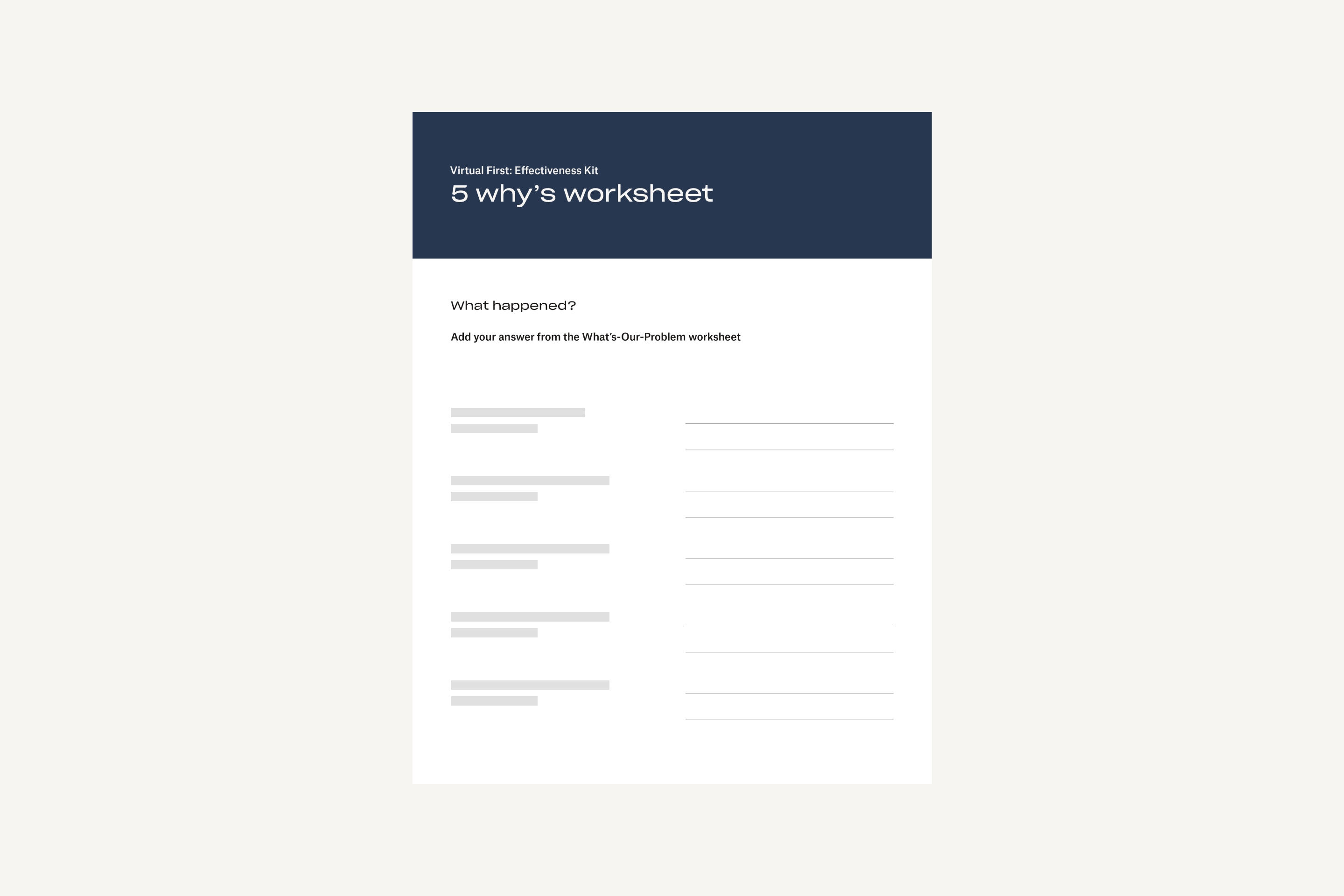Virtual First | Effectiveness Kit
Do a root-cause analysis
You’ve been trying to make a key hire for eight months, with no success. Your site crashed unexpectedly, costing millions. When the reasons for your problem are complex and confusing, it’s time for a deeper investigation. Use this workshop to get to the bottom of things.
60 MINS | VIRTUAL TEAM WORKSHOP

Step 2: Ask “Why?” 5 times
Step 3: Decide on next steps
Once you’ve identified your root cause, discuss how you can mitigate your problem or keep it from happening again. If you can assign concrete follow-ups and due dates in your meeting, go for it. For example, if your site crashed, some next steps might be:
- Draft a sample QA process — Monique, by 5/21
- Investigate code exception tools — Justin, by 5/21
- Write an apology to users and approve with comms — Jim, by 5/15
- Revisit roadmap to make sure deadlines are reasonable — Eunice, by 5/15
Step 4: Schedule an asynchronous follow-up
After your workshop, send next steps and due dates to your team. (If the problem impacted a larger group, consider sending an update to them, too.) It’s also a good idea to schedule a check-in to see how your fixes are going.
More resources
From Dropbox |
From others |
3 easy wins
Build the habit
- Tomorrow: If you run into a problem, ask “What happened?”
- Next week: Pick a recurring problem and do a quick 5 why’s exercise on your own.
- Quarterly: Pick a recurring personal challenge and do a root-cause analysis of it.

